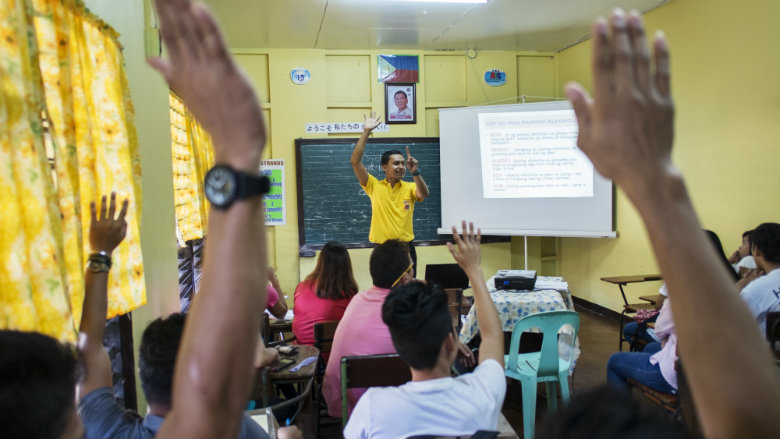Key Findings
- Despite the remarkable progress in expanding access to basic education, the education data in 2016 shows that about half of Filipino students are struggling to complete basic education on time.
- The Philippine Department of Education (DepEd) leads in the delivery of a “second chance” program to build human capital of out of school youth and adults through the implementation of the Alternative Learning System (ALS). ALS enrollees who pass the accreditation and equivalency (A&E) exam receive a government credential that can facilitate access to higher education, vocational training, and overall better employment prospects.
- The number of ALS learners being reached by the program has increased. From 537,666 in 2016, the learners enrolled in the program increased to 641,584 in 2017.
- There is a range of challenges in striving to implement the ALS, which responds to out-of-school youth and adults who have various motivations for learning and face diverse geographical and socioeconomic conditions. Recent statistics indicate that about 3.7 million youth aged 16-24 and 3.1 million young adults aged 25-30 did not complete junior high school and are out of school, which is about 23% of those aged 15 to 301.
- The budget for ALS has remained at less than 1% of the public basic education spending.
- Between 2014 and 2016, about 60% of ALS enrollees attended learning sessions regularly and 30% passed the A&E exam. Female participants consistently outperformed their male counterparts, and urban participants passed the A&E exam at a higher rate than rural participants.
- Upon the completion of ALS, 60% of the enrollees who passed the A&E exam enrolled in tertiary education or vocational training. A&E passers were twice more likely to obtain full-time formal jobs compared to those who did not pass the A&E.
- The ALS has a key role in enabling school dropouts to develop their human capital and improve their long-term educational outcomes and employment prospects.
The following key recommendations are highlighted in the policy note:
- Support participants as they strive to manage the opportunity costs of completing the ALS. Measures that ease participants’ opportunity cost, such as offering financial assistance to offset lost wages and improving the use of technology for motivating learners could boost the program’s completion rate.
- Reduce the uncertainty of the prospective returns to completing the program. The benefits from ALS in pursuing further education and training as well as formal employment are contingent on passing the A&E exam. Enhancing informal skills training and improving the A&E exam administration could encourage participants to make the short-term tradeoffs necessary to complete the program and obtain the certification.
- Alleviate financial and operational bottlenecks to ALS implementation. Increasing the national budget allocated for ALS, boosting the supply of learning materials and facilities, and creating a plan to balance different service-delivery modes with sound incentive system would further expand access to the program and support improved learning outcomes.
- Review and increase the relevance of the ALS learning content. Reviewing, updating, and monitoring the instructional content including interventions to enhance both cognitive and socioemotional skills among learners would improve their relevance to the labor market and pursuit of the formal education.
- Develop an overall strategy for reforming the ALS that encompasses the formal education system and supplemental programs designed to reduce dropouts. Ensure that the overarching educational framework continues to promote formal graduation. The most efficient and effective remedies are interventions that are applied when students at high risk of dropping out are still in school. Efforts to harmonize the ALS with Alternative Delivery Mode and regular classrooms at both policy and school levels are important.
[1] The 2017 Annual Poverty Indicator by Philippine Statistics Authority
